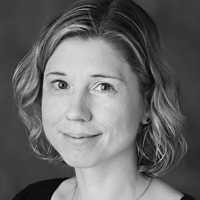Question
What speech behavioral interventions are commonly used with speakers with PD and hypokinetic dysarthria?
Answer
The behavioral interventions used for dysarthria are usually global speech intervention. That means they do not focus on specific speech sounds; they are not articulation therapy like we do with children, where we drill certain sounds. They are more global and do not focus on specific sounds. They also do not focus on specific speech components, although it may seem that way when you think about it. It seems like a “speak louder” approach focuses on the phonatory system, and “maximize articulatory effort” focuses on articulation. There is a great deal of evidence that shows these approaches are not just targeting one subsystem. The effect actually spreads across all subsystems: respiration, phonation, resonance and articulation. The global speech interventions include:
Slow speech. Why use speaking rate reduction? What is the idea behind implementing slow speech as a treatment for dysarthria? It is not quite understood how it works, but people are easier to understand when they slow down. It is thought that people may have more time to reach target positions in the mouth with the tongue, especially when they are constrained in their ability to move fast. That might help intelligibility, and it may also enhance the coordination between subsystems; for example, the coordination of phonation and articulation, such as voice onset times in stop consonants. It may give listeners more time to process information that is distorted; they will actually understand better, because they have more time to work on what they are hearing in their head. It may also help mark word boundaries better, so that the listeners are actually able to tell one word from another word. They are then able to search for what they think the distorted word actually is. Speech becomes more intelligible that way. All of these factors possibly contribute to increased intelligibility when using slow speech.
Loud speech. Loud speech is used because it improves vocal quality. It has also been shown to increase the range of fundamental frequencies; those intonation patterns become more pronounced, which seems to help with intelligibility. Also, articulatory movements change with loud speech. The jaw usually opens up more and produces larger movements, which may positively impact intelligibility. And then, the simple fact that audibility is better for the listener may help, especially when you have background noise; better audibility may increase intelligibility as well.
Clear speech. Last, but not least, the clear speech approach basically uses hyperarticulation. This is the idea of asking the person to over-enunciate, or to put a lot of effort into enunciating the words, which has been shown to elicit a slower speaking rate and louder speech. Typically, people start to slow down and to increase their intensity, and that is thought to then have the combined effect of the slow speech approach and loud speech approach, packaged two in one. Specifically, clear speech focuses on articulation, but it may also improve other aspects of speech.
Antje Mefferd, PhD, CCC-SLP is an Assistant Professor at Vanderbilt University Medical Center. Her research interest is in speech physiology, speech motor control, and the effects of neurological conditions (e.g., neurodegenerative diseases) on speech performance. She is also interested in aging-related changes in speech performance.

